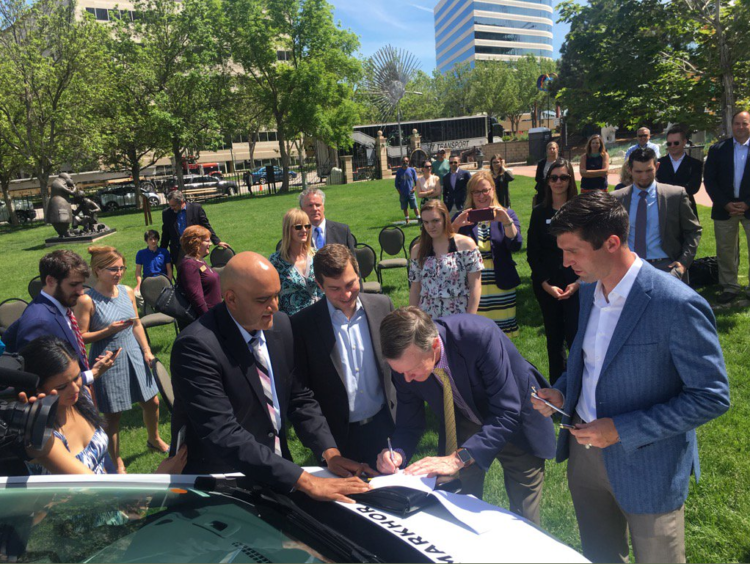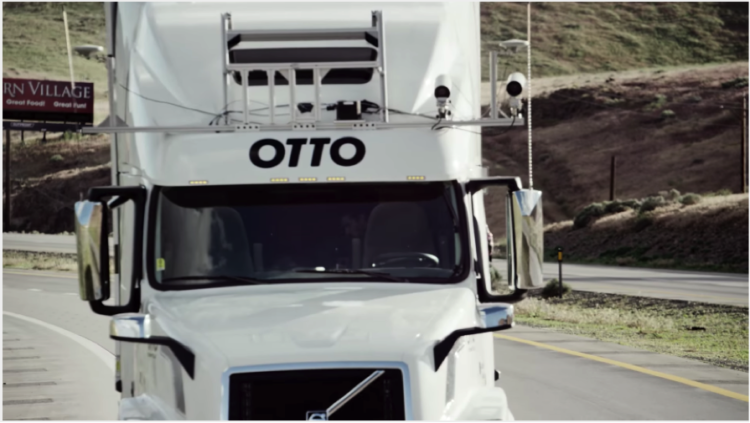June 23, 2017
Every week, it seems, a state considers a new law or executive order that is intended to accelerate the development of automated vehicles (AVs). Over 70 AV bills have been introduced in state legislatures across the country this year, often with different definitions and restrictions on their operation. But while the bills that have been introduced vary widely, a larger shift is underway in how state legislators think about this nascent technology.
It should come as no surprise that state legislators are excited for AVs –the nascent technology promises to reduce the number of crashes caused by human error while also making travel more efficient and more sustainable. The cherry on top: AV developers employ skilled experts and carry with them a slew of investments from venture capitalists, automakers, and tech firms.
But automakers and tech firms have struggled to keep up with these policies in recent years, an issue that was exacerbated by the use of inconsistent definitions for automated vehicles and the creation of regulatory hoops to jump through.

(Colorado Governor John Hickenlooper signs S.B. 213, allowing AVs in the state. Source: @GovofCo)
This year alone, at least 8 states have passed AV laws. These reflect not only the priorities of each state’s legislature and governor as AVs are integrated into their transportation network, but also the depth of their understanding of the technology (and, in some cases, their latent fears).
The laws recently enacted by Colorado and New York stand apart as a prime example of how states have adopted one of two paths: to encourage safe testing with light-touch regulations or to establish burdensome oversight processes and registration fees.
New York has long been a subject of criticism among advocates for AV technology due to a state law requiring a human driver to have at least one hand on the wheel at all times when a vehicle is in operation. This, of course, is not conducive to the implementation of a technology that is built around the idea of humans receding control of the vehicle to an automated driving system.
The state’s answer to this issue was a provision buried deep in its budget that allowed for the testing of AVs by suspending this rule for entities that are testing AVs under a very specific set of circumstances.
It is not unusual for state AV laws to require developers to register their vehicles and report collisions or disengagements of the automated systems to the state. As long as developers follow these rules, they are often permitted to test without any additional restrictions.
But the New York law went a few steps further by establishing stringent regulations on AV testing that have not been seen before. The most surprising aspect is that AVs must always have a police escort during testing – and that the AV developer must pay for it.
The state’s extensive registration process also requires testing entities to submit an application beforehand that specifies the date and time, origin and destination, sequence of roads on which the vehicles will travel, and calculated testing distance within one-tenth of a mile.

(Source: New York Department of Motor Vehicles)
So far, Audi is the only company that has applied and been approved to test AVs in the state.
But this got us thinking, how much would Waymo – which has driven the most miles in an AV – have to pay if California had the same laws? We did a back-of-the-envelope calculation to find out.
In 2016, Waymo drove 635,868 miles in California. For simplicity’s sake, we will assume that Google’s cars spent half of the time on freeways at an average speed of 55mph, and the other half on city streets at an average speed of 25mph.
At a rate of $0.535/mile, Waymo would already have to pay $340,189.38 for city and freeway driving combined.
On top of that, it would take 5,780 hours and 37 minutes to drive 317,934 miles on the freeway, amounting to $536,036.89 at the hourly rate set by New York ($0.535/mile). The cost is even greater on city streets – the hourly police supervision alone would cost Waymo $1,179,278.01 for 12,717 hours and 22 minutes of test-driving their AVs 317,934 miles.
All told, Waymo would have to pay as much as $2,055,504.16 in police supervision fees to drive the same number of miles in New York as it does in California last year. This might not be prohibitive for a company with pockets as deep as Waymo’s, but it certainly would not encourage them to relocate to New York – moreover, this would be a tremendous burden for a tech firm or startup that hopes to test its vehicles in the state.
|
Miles Driven Cost ($0.535/mile) |
Hours to Drive 317,934 Miles |
Hourly Cost ($92.73/hr) |
Total Cost |
| City (25mph) |
$170,094.63 |
12,717.33 |
$1,179,278.01 |
$1,349,372.64 |
| Freeway (55mph) |
$170,094.63 |
5780.62 |
$536,036.89 |
$706,131.52 |
|
|
|
TOTAL: |
$2,055,504.16 |
Colorado took a different approach.
The Centennial State has been in the spotlight for AV development since well before it passed its first law last month. Last year, automated trucking company Otto (now a subsidiary of Uber) conducted a delivery of 45,000 cans of Budweiser from Fort Collins to Colorado Springs. (Ed. Note: Fort Collins is due north of Denver, so this beer run was south bound and down, not east bound and down.) This was considered to be the first revenue-generating shipment of goods using an automated truck.
 Governor John Hickenlooper (D) recently signed Colorado’s first AV bill into law. This establishes a permissive testing framework that seeks to strike a balance between ensuring safety and encouraging private sector innovation.
Governor John Hickenlooper (D) recently signed Colorado’s first AV bill into law. This establishes a permissive testing framework that seeks to strike a balance between ensuring safety and encouraging private sector innovation.
The law uses the Society of Automotive Engineers’ (SAE) J3016 standard for levels of vehicle automation to clearly define the capabilities and limitations of vehicles being tested. Additionally, it allows developers to test AVs with or without human drivers – and clarifies that traffic laws designed to regulate human behavior behind the wheel (e.g., using a cell phone) do not apply when an automated system is driving.
Instead of placing burdensome reporting requirements on testing entities, the law allows companies to test their vehicles freely, as long as they comply with existing vehicle safety standards. The Colorado Department of Transportation will issue annual reports to the state legislature on the status of testing in the state – including challenges, progress, and major incidents.
Regardless, is important to note that enacting AV policies will not inherently attract or deter AV developers who are deciding whether to test in a specific state – after all, BMW chose to begin testing in New York almost immediately.
State policymakers should understand that AV development is most viable in states with an ecosystem of strong research institutions, well-maintained roads, regulatory certainty for public road testing, and high-tech workforces.
A recent report by the Eno Center for Transportation, Adopting and Adapting, examined the AV policies enacted by states in recent years and their implications for AV development. The report provided a checklist of 25 recommendations for state policymakers as they consider enacting AV policies that can be accessed here.



 Governor John Hickenlooper (D) recently signed Colorado’s
Governor John Hickenlooper (D) recently signed Colorado’s 

